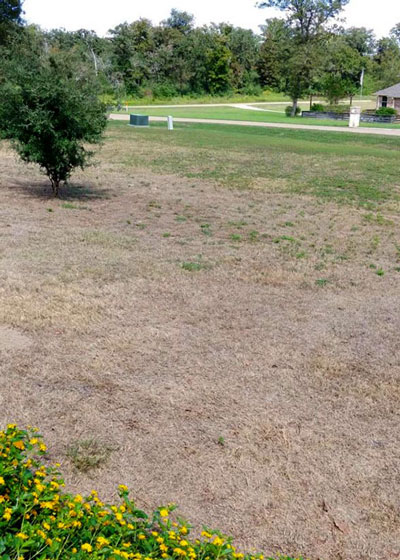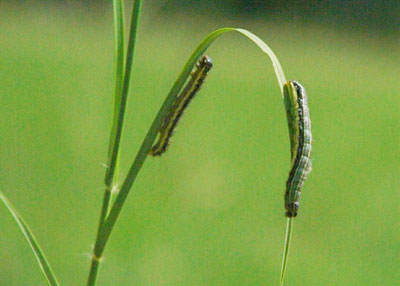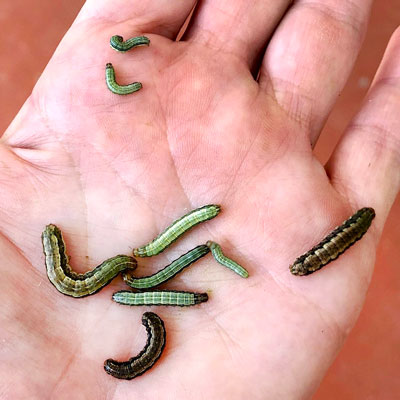Question of the Week – Number 1: July 29, 2021

“What is killing my bermudagrass? How can I save it?”
The question comes to me in two ways. Some people ask it in the way I’ve presented it, and others have actually seen the caterpillars and fear the worst for their turfgrass.
The facts about armyworms…
• As turfgrasses go, armyworms attack primarily bermudagrass, not St. Augustine.

• First evidence, as you can see, is that areas of the lawn turn an unsightly brown.
• You’ll often see flocks of birds feeding on the larvae.
• The caterpillars feed on the blades of the grass and not on the runners or roots. Essentially, they are “scalping” the lawn. That is to say, they generally do little or no permanent damage.
• They are the larval form of small white moths. They may very well have started their conversion into the next generation of moths, eggs and more larvae (caterpillars) that could show up in just a few weeks.
• In the meantime, apply a high-quality, all-nitrogen fertilizer (one-third to one-half of the nitrogen in slow-release form). Keep the lawn watered deeply. The grass will start to green up very quickly.
Want to learn more about armyworms? Here is an outstanding news release published by our good friend Dr. Mike Merchant, now retired as Extension Entomologist with Texas A&M.


